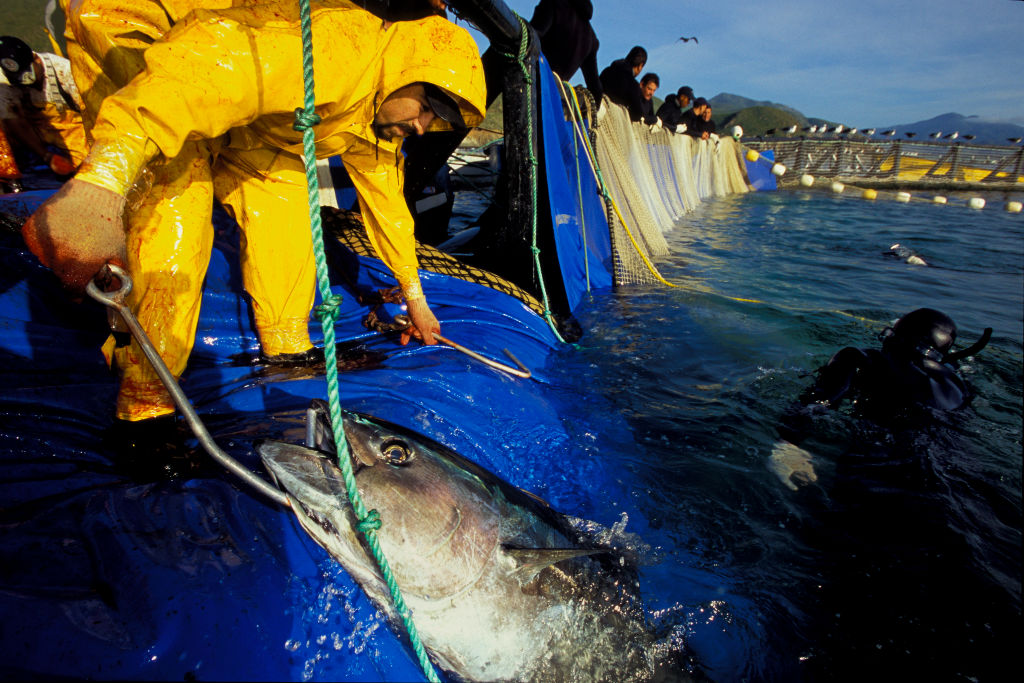
Today, June 8, is World Oceans Day, when stakeholders around the world stop to reconsider the value of ocean conservation. This year’s theme is “Planet Ocean: Tides are Changing”—making the case that by protecting the ocean we are ultimately protecting ourselves. One of its core pillars is supporting sustainable seafood, which, in some cases, means not fishing at all.
Scientists agree that at least 30% of the world’s oceans should be declared off limits to commercial exploitation in order to protect fish stocks and marine biodiversity. The fishing industry, not surprisingly, has yelped that cordoning off 30% of our seas would translate into a 30% reduction in catch, driving seafood prices higher around the globe.
Not so, according to a new report published in the journal Science Advances. To unpack the issue, researchers looked at fishing hauls before and after the establishment of Mexico’s Revillagigedo National Park, a 57,143 sq.-mile (148,000 sq. km) area surrounding a 4-island archipelago south of Mexico’s Baja California that was set aside as a marine protected area (MPA) in November 2017. Calculating the average daily haul from the 90 industrial fishing vessels that plied the biodiverse waters in the region (approximately the size of Illinois) since 2007, the report found that not only did Mexico’s fishing industry not suffer, but that the catch actually increased by an average of 8% in the years after the MPA was established.
Lead author Fabio Favoretto, a marine ecologist at the University of California, San Diego’s Scripps Institution of Oceanography, attributes the increase to what he calls the “fish bank” effect. Because the ecosystem is protected, MPAs produce an explosion of marine life that eventually spills out of the protected area and into new territories that can be fished. The fish in the MPA are the principal, explains Favoretto. The ones that spread into non-protected areas are the interest. “As long as you protect the principal, you always have an income,” he says.
Read more: Why This Year Is Our Last, Best Chance for Saving the Oceans
Favoretto launched the research project after watching Mexico’s powerful fishing industry protest the MPA’s proposed implementation by stating that they risked losing 30% of their catch. The industry also claimed that the price of tuna—its most important fish—would skyrocket in Mexico as a result. While Favoretto and his fellow conservationists believed that MPAs would actually improve local fish stocks based on their understanding of ecological systems, they didn’t have the data they needed to prove it to the industry. The Revillagigedo MPA was a perfect case study, says Favoretto.
“This data proves that MPAs work, and they don’t harm fishermen,” he says. “The industry won’t be able to say anymore with a straight face that MPAs create famine and raise prices.”
Now that data exist to back up the theory, the next step is convincing the world’s fishing industries of the value of reaching that 30% global goal. At the moment, only 3% of the world’s oceans are completely off-limits to fishing, says Matt Rand, director of the Marine Habitat Protection program at the Pew Charitable Trusts. “In order to shift the balance, we need even more research to show how MPAs like Revillagigedo can protect fisheries as well as the economy.” Favoretto and his team have their work cut out for them.
A version of this story also appears in the Climate is Everything newsletter. To sign up, click here.
More Must-Reads from TIME
- Introducing the 2024 TIME100 Next
- The Reinvention of J.D. Vance
- How to Survive Election Season Without Losing Your Mind
- Welcome to the Golden Age of Scams
- Did the Pandemic Break Our Brains?
- The Many Lives of Jack Antonoff
- 33 True Crime Documentaries That Shaped the Genre
- Why Gut Health Issues Are More Common in Women
Contact us at letters@time.com